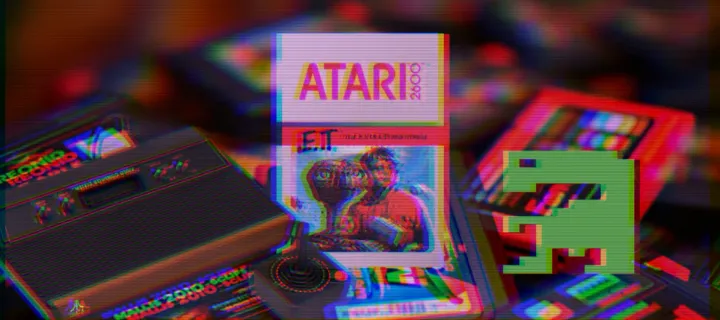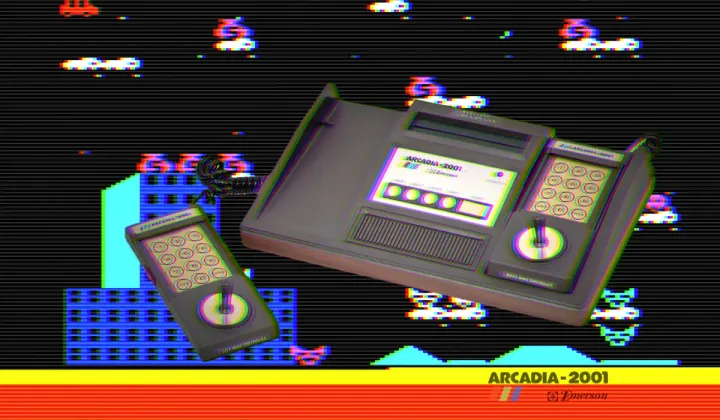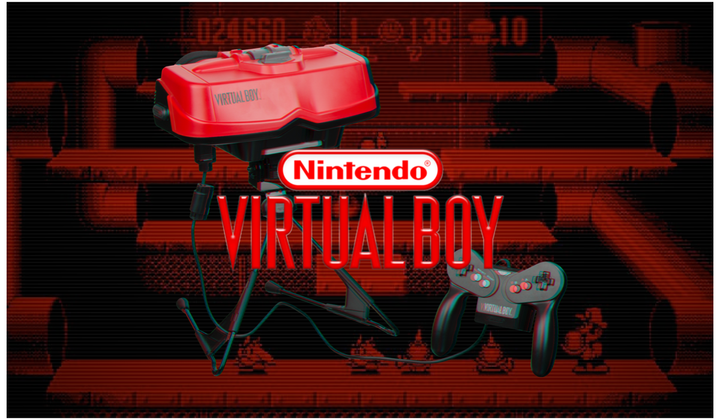The Rise and Fall of ClassicGaming.com: A Pioneering Hub for Retro Gaming
As I booted up my browser each morning in the late '90s, ClassicGaming.com was my digital home. This beloved hub wasn't just a website — it was where my retro gaming heart belonged.
ClassicGaming.com was a groundbreaking website dedicated to preserving and celebrating the history of video games, particularly focusing on classic arcade and retro gaming culture. Launched during the late 1990s, the site quickly became a beloved resource for gamers and enthusiasts seeking information on vintage games, emulators, and gaming history. It was part of the larger GameSpy Network, which hosted numerous niche gaming sites, including fan-favorite hubs like The Castlevania Dungeon. ClassicGaming.com stood out for its meticulously curated content, including walkthroughs, technical resources, and fan-created materials, all tailored to iconic titles such as Pac-Man, Donkey Kong, and Space Invaders.
The website was part of a larger ecosystem that included sister sites like The Castlevania Dungeon and hosted content from GameSpy. These niche hubs catered to fans of specific franchises and genres, creating a network of interconnected communities.

The website's influence extended beyond its content, as it fostered a community of retro gaming enthusiasts during a time when the internet was still finding its footing as a platform for niche interests. However, ClassicGaming.com’s journey came to an end when it was acquired by IGN Entertainment, a major player in the gaming journalism space. IGN had purchased GameSpy in the mid-2000s, and by 2009, ClassicGaming.com was officially shuttered, with its domain redirecting to IGN’s main site. This transition marked the end of an era for a site that had once been a cornerstone of retro gaming culture.
Join me as we delve into the history, contributions, and eventual closure of ClassicGaming.com, exploring its role in shaping the online gaming landscape and its lasting influence on retro gaming culture.
The Birth of ClassicGaming.com and Its Early Foundations
ClassicGaming.com emerged during the late 1990s, a golden age for gaming enthusiasts who were just beginning to explore the internet as a hub for their shared passion. The website was founded as a dedicated space for retro gaming, focusing on arcade classics, console games, and the burgeoning world of abandonware. It quickly became a cornerstone for retro gaming culture, offering resources, walkthroughs, and fan-made content for iconic titles like Pac-Man, Donkey Kong, and Asteroids.
The site was unique in its approach, featuring individual pages for specific games, each with its own design and style. These pages were treasure troves of information, including strategies, technical details, and cultural insights. ClassicGaming.com also hosted forums, which became vibrant communities where fans could discuss their favorite games, share tips, and even trade rare titles. This community-driven aspect was a significant factor in the site's early success.
Integration into the GameSpy Network
In the early 2000s, ClassicGaming.com was absorbed into the GameSpy network, a move that expanded its reach but also marked the beginning of its transformation. GameSpy, known for its multiplayer gaming services and community-driven websites, saw ClassicGaming.com as a valuable addition to its portfolio. Under GameSpy, the site continued to thrive, benefiting from increased resources and visibility.
However, this period also saw a shift in focus. While the core content of ClassicGaming.com remained intact, the site's identity began to merge with GameSpy's broader gaming initiatives. This integration brought new features, such as enhanced forums and cross-promotion with other GameSpy properties, but it also diluted the unique charm that had made ClassicGaming.com a beloved destination for retro gaming fans.
The IGN Acquisition and the Decline of ClassicGaming.com
In 2003, IGN Entertainment acquired GameSpy, including ClassicGaming.com. This acquisition was part of IGN's strategy to consolidate its position as a leader in gaming media. While the move initially seemed promising, it soon became clear that ClassicGaming.com was not a priority for IGN.
This acquisition was heralded as a win for IGN, which sought to dominate the gaming media space. At the time, IGN was positioning itself as the go-to platform for all things gaming, from cutting-edge news to retro gaming nostalgia. However, ClassicGaming.com’s unique identity as a haven for retro gaming enthusiasts was at risk of being overshadowed by IGN’s broader focus.
ClassicGaming.com’s Role Within IGN’s Expanding Ecosystem
Once under IGN’s ownership, ClassicGaming.com was initially maintained as a separate entity. IGN recognized the value of the retro gaming community and sought to leverage the site’s dedicated audience. ClassicGaming.com’s archives, which included walkthroughs, fan art, and detailed retrospectives on classic games, were seen as valuable assets that complemented IGN’s broader content offerings.
However, the integration was not without its quirks. ClassicGaming.com’s minimalist, community-driven design clashed with IGN’s more commercialized and ad-heavy interface. Fans of the site often joked that navigating ClassicGaming.com under IGN felt like “visiting a mom-and-pop diner that had been bought out by a fast-food chain.” The charm was still there, but the corporate fingerprints were hard to ignore.
The Shift in Priorities: From Retro to Revenue
As IGN continued to grow, its priorities shifted towards maximizing revenue through high-traffic content and advertising partnerships. Retro gaming, while beloved by a niche audience, was not a major revenue driver. ClassicGaming.com, with its focus on older games and community-driven content, did not align with IGN’s new direction.
By the mid-2000s, IGN began redirecting resources away from ClassicGaming.com. Updates became less frequent, and the site’s once-thriving forums saw dwindling activity. Longtime users lamented the lack of support, with one forum member famously quipping, “IGN treats ClassicGaming.com like an old cartridge—blowing on it occasionally but never really fixing it.”
The Absorption of ClassicGaming.com’s Content
As IGN’s focus moved away from niche communities, ClassicGaming.com’s content was gradually absorbed into IGN’s main platform. Popular features such as game retrospectives and fan-submitted content were either archived or repurposed for IGN’s broader audience. For example, ClassicGaming.com’s detailed walkthroughs for retro games were often rebranded as “IGN Guides,” losing their original attribution in the process.
This transition was not without controversy. Fans accused IGN of erasing ClassicGaming.com’s identity, with one Reddit thread from 2008 lamenting, “It’s like they took the Mona Lisa and slapped a corporate logo on it.” IGN, for its part, argued that the integration allowed ClassicGaming.com’s content to reach a wider audience, though this claim was met with skepticism from the site’s loyal fanbase.
As retro gaming experienced a resurgence in the 2010s, fueled by the popularity of mini consoles like the NES Classic and the rise of retro-focused YouTube channels, many fans hoped IGN would relaunch ClassicGaming.com as a dedicated retro gaming hub.
Unfortunately Reality had some other plans.
The Day ClassicGaming.com Died
IGN opted to incorporate retro gaming content into its main site, often as part of broader features or listicles. Visitors would be redirected (try it) to the IGN Website. ClassicGaming.com was gone for good.
This approach, while practical for IGN, failed to capture the spirit of ClassicGaming.com.
When ClassicGaming.com’s URL began redirecting to IGN, it was seen by many as a symbolic betrayal. IGN, a mainstream gaming site focused on current trends and blockbuster titles, was perceived as the antithesis of what ClassicGaming.com stood for. The latter had been a haven for retro gaming enthusiasts, offering in-depth historical content and a sense of community that IGN’s sprawling network couldn’t replicate.
Fans who clicked on the old ClassicGaming.com links expecting to find a treasure trove of retro gaming content were instead met with IGN’s homepage, which often featured articles on the latest Call of Duty or Fortnite updates. The jarring contrast left many feeling alienated, as if their niche interests had been steamrolled by the juggernaut of modern gaming culture.
Fans often joked that IGN’s retro gaming coverage felt like “your dad trying to be cool by wearing your old band T-shirts.”
The Nostalgic Shock of Realization
After ClassicGaming.com’s shutdown People often stumbled upon broken links or redirects to IGN while searching for old gaming content, leading to a bittersweet wave of nostalgia.
When ClassicGaming.com disappeared, it wasn’t just the loss of a single site—it felt like the collapse of a shared cultural archive.
Unlike the immediate uproar seen with other gaming platform closures, the response to ClassicGaming.com’s disappearance was more subdued, likely due to its gradual decline under IGN’s ownership. However, when fans did realize the site was gone, the reaction was akin to discovering an old favorite arcade had been replaced by a generic coffee shop—confusion, sadness, and a tinge of anger.
The closure of ClassicGaming.com had a ripple effect on the broader retro gaming community. While some fans found new homes in forums and social media groups, others drifted away from the scene altogether. The loss of a centralized hub made it harder for newcomers to discover and engage with retro gaming culture, potentially stunting the growth of the community.
However, the site’s disappearance also galvanized some fans to take action. The rise of retro gaming conventions, YouTube channels dedicated to classic games, and even the resurgence of retro-inspired indie titles can all be seen as part of the community’s response to the loss.
To my surprise, while researching, I discovered that IGN has incorporated content from ClassicGaming.com into their wiki about the history of video game consoles.

The Leftovers Of ClassicGaming.com
The Legacy of ClassicGaming.com
Despite its demise, ClassicGaming.com left an indelible mark on the gaming community. It was one of the first websites to treat video games as cultural artifacts, offering in-depth analyses and celebrating their artistic and historical significance. The site's emphasis on community engagement also set a standard for future gaming websites, demonstrating the value of fostering connections among fans.
The Emotional Connection to a Bygone Era
At its core, the reaction to ClassicGaming.com’s closure is rooted in a deep emotional connection to the past. For many fans, the site wasn’t just a source of information—it was a portal to their childhoods, a place where they could relive the magic of discovering their favorite games for the first time. Its loss felt personal, like losing an old friend who had been there through countless late-night gaming sessions and heated debates about the best 8-bit soundtrack.
This emotional connection is what continues to drive efforts to preserve and celebrate the legacy of ClassicGaming.com. Whether through fan-made archives, retro gaming podcasts, or spirited discussions on forums, the community’s response serves as a testament to the enduring power of nostalgia and the unbreakable bonds forged through a shared love of gaming history.
R.I.P. ClassicGaming.com - Thanks for everything ❤️




